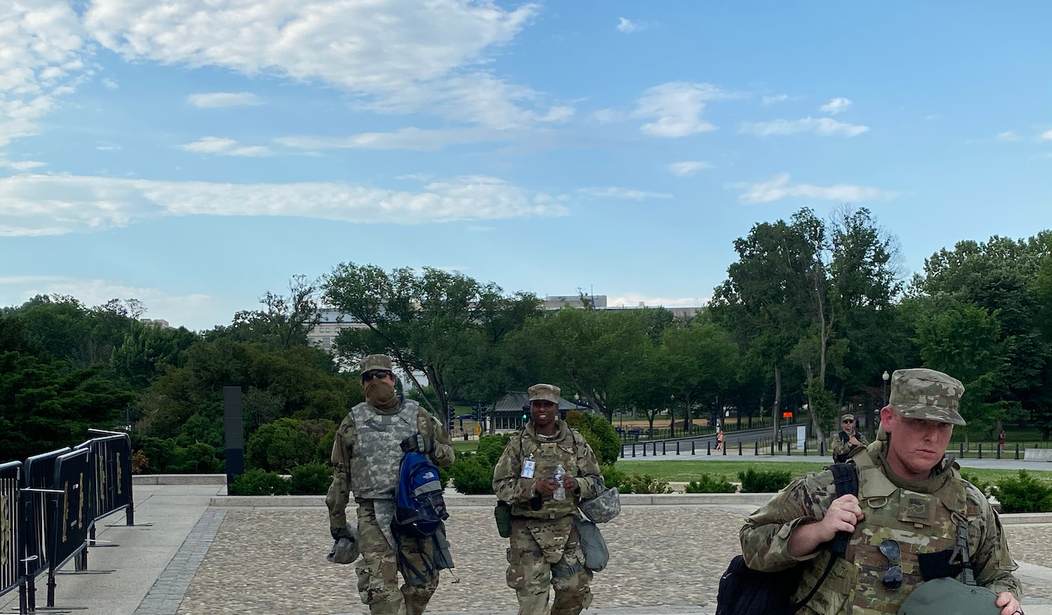For the past several years, all branches of the United States military have been struggling to meet their recruitment goals and things haven’t gotten noticeably better with the passing of the pandemic. But the one group that’s really been doing poorly this year is the Army National Guard. They are now facing the possibility of their second year of seeing a net loss of soldiers, with fewer qualified applicants signing up than those leaving the service. The Chief of Staff of the Guard said this week that the situation isn’t critical yet, but if things don’t improve in the next year or two they will have to begin scaling back on some of their duties. So what’s driving these losses? There are a lot of factors involved, but the Guard’s leadership has recognized that they need to update the way they recruit and – more importantly – retain soldiers going forward. That may be easier said than done, however. (Associated Press)
Soldiers are leaving the Army National Guard at a faster rate than they are enlisting, fueling concerns that in the coming years units around the country may not meet military requirements for overseas and other deployments.
For individual states, which rely on their Guard members for a wide range of missions, it means some are falling short of their troop totals this year, while others may fare better. But the losses comes as many are facing an active hurricane season, fires in the West and continued demand for units overseas, including combat tours in Syria and training missions in Europe for nations worried about threats from Russia.
According to officials, the number of soldiers retiring or leaving the Guard each month in the past year has exceeded those coming in, for a total annual loss of about 7,500 service members.
Reading through excerpts from some of the exit interviews of the departing soldiers you will find many of the typical challenges that face all branches of the service in terms of recruiting and retention. But there are also some emerging issues that weren’t really a factor in the relatively recent past.
As the pandemic recovery moves forward, the job market is still pretty hot although it has been slowing down a bit this year. Also, wages have been rising, even though most if not all of those increases have been eaten up by inflation. When civilian jobs offering decent pay are plentiful, military enlistment tends to suffer as a result. That is still happening this year.
Another factor is much harder to measure, but it seems to be very real nonetheless. Recruiters are describing a decline in the drive to serve the country because of the shifting nature of the mission. Enlistments soared after 9/11 and there was always a need for more help as the two wars in Iraq and Afghanistan dragged on. But now, many members are reflecting an attitude of feeling like “the war is over,” so that drive to put it all on the line for the country is fading.
The nature of the current mission is shifting also. Some potential recruits note the increase in demands for the Guard to go out and control their fellow citizens during riots and unrest rather than fighting foreign enemies or dealing with natural disasters. And being sent south to deal with an endless army of illegal immigrants in the blazing summer heat really isn’t what many of them signed on for either.
There is one other factor that you won’t find unless you read down nearly to the end of the lengthy AP article I linked to. The COVID vaccine mandate is hitting the Guard particularly hard. It’s a much smaller force overall than the regular Army, so any losses look disproportionately larger. And over the next one to two years, they’re going to be losing a lot of people if the mandate isn’t canceled.
While the shortfalls for 2022 may be small percentages, the Guard is facing increasing losses over the next year due to the U.S. military’s requirement that all troops get the COVID-19 vaccine. Currently about 9,000 Guard members are refusing to get the shot, and another 5,000 have sought religious, medical or administrative exemptions.
So far, no Guard members have been discharged for refusing the vaccine order. The National Guard is awaiting final instructions from the Army on how to proceed. Officials have said it’s not clear when they will get that guidance.
Assuming none of the exemption requests are approved (and almost none have been thus far), the Guard could be looking at 14,000 people heading out the door. If the net loss of 7,500 soldiers under the current conditions is straining them this noticeably, losing nearly 15,000 would be basically catastrophic. But the current administration shows no signs of backing off from the military vaccine mandate.
We’re talking about soldiers here. These people are almost uniformly young, athletic, and in the best shape of almost any Americans. They are certainly at the least risk of death or a seriously negative outcome if they contract the virus. Why the White House continues to pursue this path remains a mystery to me, but our military will pay the ultimate price for it if we can’t meet our minimum recruiting goals.







Join the conversation as a VIP Member